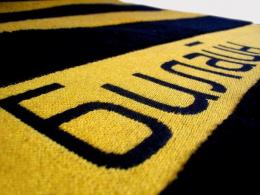The laptop power connector is getting hot. Charging connectors for laptops and reasons for their malfunction
The Asus X59S laptop whose power connector got very hot and even the case around it melted, as we read more...
This is usually due to poor contact in the connector or solder joint. In this case, the central positive pin is dangling. Damaged power connectors often lead to short circuits and failure of the laptop's power circuits, so this connector must be replaced.
To carry out repairs, you will have to arm yourself with a screwdriver and disassemble the laptop. Also in this article we will look at preventative cleaning of the cooling system.
Let's start disassembling, turn off the laptop, disconnect the power supply, remove the battery.

Unscrew the two screws, remove the cover and remove the hard drive.


Main components of the laptop:
1. Cooling system
2. WiFi module
3. RAM modules

Remove the cooler by first unscrewing the two mounting screws.

Here is such a “felt boot” of dust in the radiator of the cooling system.

Unscrew the six screws and remove the cooling system. We remove the old paste and in this case it would be a good idea to replace the thermal pad.

The DVD drive is held in place by only one screw, unscrew it and remove the drive.

To dismantle the screen, remove the decorative cover, having previously unscrewed two screws, disconnect the matrix cable and the inverter cable, and pull out the two WiFi wires from the case.

Now unscrew the four screws securing the screen hinges and remove it.

We unclip the five keyboard latches, lift and turn over the keyboard, disconnect the cable and remove it. The keyboard was difficult to remove, since the laptop was previously flooded with something and it stuck to the case.

Unscrew all marked screws from the top of the case.

Unscrew the remaining screws from the belly of the laptop and remove top part housings.

In the photo we see the consequences of an overheated power connector and a burnt-out diode.

Having gained access to the motherboard, unscrew the five screws securing the board and remove it.

We change the power connector with the diode.

The photo shows how the housing of the removed connector has melted.

Having replaced all the burnt parts with new ones, we assemble the laptop. We perform the assembly in the reverse order, not forgetting to apply new heat-removing paste to the thermal interface.

Laptop charging connectors play an important role in the functionality and performance of the entire laptop. It is with their help that nutrition occurs. battery the required amount of energy from charger connected to a network or other power source. Despite this importance for computers, connectors are one of the weakest points of most of them.
Charging connectors for laptops very often fail due to intensive use of the device itself. Active users Such devices, which insert or remove the charger plug from the charging connector at least once a day, eventually encounter problems with power outages when charging the laptop battery. This may indicate a malfunction of the cable, plug or connector (socket) in the laptop, which manifests itself in incomplete charging of the battery or its complete reluctance to charge, and the plug itself may also become very hot. Constant pulsations and charge fluctuations in power circuits often lead to breakage of connector contacts with motherboard and battery failure.
Having analyzed the most common reasons connector breakdowns encountered by specialists service centers during repairs computer equipment, came to certain conclusions. In ASUS and Samsung laptops, the contacts that are used to solder the connectors to the board most often break, while in HP and DELL the connectors suffer from laptop falls and sudden pulling out of the charger plug.
Very often they break down precisely because of broken wires. The device charger cable is constantly subject to deformation and often breaks right next to the plug, as a result, while passing through it electric current, it, together with the plug, begins to heat up, spark and melt, deforming and damaging the contacts with adjacent components in the laptop. Most often, wires fail in Asus laptops, Acer, Apple, less often Lenovo, Dell and HP. The reliability of the latter is explained by the fact that they are a thick three-core cable that is less susceptible to kinks and breaks.
Quite successful magnetic charging connectors for laptops Apple MagSafe, they are easily removed from devices. So, if you accidentally touch the charging cable, it will simply jump out of the connector, allowing the laptop to remain on the table and not fall to the floor. On the one hand, this is quite convenient, on the other hand, not very convenient, since such a connector remains open enough to get inside it contains moisture and various contaminants. Such connectors require special treatment and care.
HP and Dell offer almost identical compatible charging connectors for their laptop models. The only thing is that the connectors may not fit different generations laptops from these manufacturers, this is due to the presence of a third special contact in the connectors of newer models.
Replacing the power connector
Related materials:

Today we can absolutely safely say that Chinese smartphones breaking all sales records. And this is completely unsurprising. After all, why pay more just for... 
Over the past few decades, China's economy has done quite well powerful jerk forward. Now the Chinese can be proud of the honorary title the best manufacturer household appliances... 
Using a pedometer allows you to monitor a person’s level of physical activity. It allows you to measure the number of steps that he takes and motivates them...
The fact that the laptop power supply heats up when charging should not confuse you - this is normal. Another question is if the power supply gets very hot and does not cool down after the battery is fully charged. Let's see why this happens and what to do to prevent your laptop from suffering from overheating.
Reason for heating
The reason that the laptop power supply gets very hot when charging is the underrated power of the adapter. The more powerful the adapter, the less it heats up when charging. But with an increase in power, the size of the power supply will become larger, which negatively affects users’ perception of the laptop.
Therefore, manufacturers select an adapter with the minimum permissible power for the laptop kit. You can charge the laptop, but don’t be surprised that it gets very hot – the adapter has to work at maximum speed.
Block turns alternating current 220V D.C. 15-24V. The conversion is carried out by a transformer, and rectification is carried out by a diode bridge. Depending on the magnitude of the electrical load, both units heat up with varying degrees of intensity during operation.
Typically, maximum heating occurs during the first 20-30 minutes of operation of the laptop with the power supply connected. This is due to the fact that the adapter operates under maximum load, simultaneously charging the battery and maintaining the operation of the computer. As a result, the power supply gets very hot.

But if the adapter remains hot after charging, then this is a reason to pay attention to its condition. Why is this happening? In addition to low power, there may be several other reasons why the power supply gets very hot:
You should also worry about the condition of the laptop and adapter if, when charging, the power supply gets so hot that you can’t hold it without discomfort. Human skin can withstand temperatures of 60-70 degrees, but if the adapter heats up to 80 degrees, you won’t be able to pick it up.
How to reduce the temperature of the adapter?
Now you know why the laptop power supply gets very hot. It remains to understand how to rid the laptop of this shortcoming. You can try the following methods:
- Place the power supply in an area where it can cool naturally. As noted above, the adapter should not be covered with a blanket or any cloth. It is also contraindicated for him to lie on the carpet and be exposed to direct sunlight.
- Try not to overload the laptop when charging. Wait for the battery to charge before launching heavy games or resource-intensive programs.
If neither natural cooling nor temporary abandonment of games reduces the temperature of the power supply, then you will have to buy new equipment with more power. But to prevent the laptop from burning out, you need to choose the right power supply, taking into account the voltage. Examine the markings on the laptop case. The charger parameters should be indicated there: for example, 19V-2.4A.

Then look at the current and voltage on the old power supply, which gets very hot. The voltage on it should be the same, but the current strength may be a little higher.

To get rid of overheating, you should buy an adapter with the same voltage (19V) and higher current - for example, 4.7A instead of 2.7A. In this case, the power supply will maintain a low temperature when charging, because the load on the nodes will decrease.
Laptop temperature monitoring
You need to monitor not only the condition of the adapter, but also the temperature of all laptop components. It is difficult to determine how they heat up by touch, so they are used for monitoring special utilities: Speccy, CPU-Z, etc. In addition to the power supply, it is necessary to periodically check the temperature:
- Storage devices, especially if the laptop has an HDD and not solid state drive(SSD).
- Graphics adapter. The video card gets especially hot during games and when running resource-intensive applications: various graphic editors, multimedia programs.
- System board. From temperature motherboard depends largely on how the other components heat up.
- Central processor. If the CPU overheats, system performance will drop dramatically.
You can see the maximum permissible temperature of the equipment in its specification, but if you use the Speccy utility, if it overheats, the indicator next to the device will turn red.

Another clear sign of excessive temperature rise is freezing and periodic unauthorized shutdown of the laptop. If you encounter such a problem, it is recommended to disassemble the laptop, clean the cooling system and case from dust and replace the thermal paste. In some cases, to maintain normal temperature you have to install additional coolers built into the cooling pad. Without proper cooling, components can quickly fail, and their replacement will require significant financial costs.

In this sense, the heating of the power supply is not such a serious problem, because in most cases, users experience unnecessary worry about the temperature, when in fact the adapter is completely working.
How to conduct self-diagnosis and identify a breakdown following typical signs.
Laptop owners often encounter problems with laptop charging elements. It is easy to find out that the breakdown is related to charging and its components; a laptop that was running from the mains without using a battery is enough long time, suddenly turned off for unknown reasons, especially when the location of the laptop changes.
Ways to independently identify a breakdown
How regular user can find out what exactly is the cause of the breakdown, the plug or socket of the power supply connector, without resorting to the help of professionals?
In this article, we will look at some options for how to independently detect a defect of this type, without contacting computer repair specialists. This article presents the most simplified ways to find such a breakdown.
Before you begin to independently identify the breakdown, it should be noted that our workshop in Minsk will produce laptop charging socket repair while guaranteeing high quality and speed of service. If you have problems related to charging your laptop, we will help you fix them quickly and inexpensively.
In order to almost accurately determine the cause of the breakdown, it is necessary to carry out several simple manipulations.
In order to eliminate a defect that leads to a permanent shutdown of the laptop as a result of damage to the power supply connector, you do not need to have special equipment and skills at hand. For such a simple operation, it is enough to know how to work with a soldering iron, as well as to have the required type of connector available. Depending on the location of the damage, you may need to disassemble the case of the laptop itself or the case of its power supply. This is done to replace the broken end switch and plug.
Laptop power supply circuit, how does it work?
To begin with, let’s abandon the use of complex specialized terms and figure out how the power supply circuit of a laptop works.
Let’s immediately make a reservation that we will not take the battery into account, since it was not initially included in the technical specifications. The user must also understand that the reason for the shutdown may be other, more serious failures, not just a problem with its power supply. One of the reasons may be excessive overheating or a defect in the motherboard resulting from the use of the laptop.
Based on the above factors, it should be concluded that the breakdown must be diagnosed using a working, connected and charged battery.
Important! In cases where a new working battery is installed in the laptop, but shutdowns still occur, then most likely the cause of the breakdown does not lie in the charging system.
In more detail, in order, we will analyze the main components pulse block power supply (UPS):
- power cable (plug for 220V, connector type C5 x 2.5A);
- UPS unit;
- plug, limit switch (the plug goes into the charge socket located at the end of the laptop).
Often the laptop charging socket is located next to the monitor on the right side or at the back of the laptop case. Many craftsmen note that most often the socket where the charge plug is inserted or the plug itself fails.

Common and main causes of breakdowns
The main reasons for such failures in laptops include the following:
- inaccurate operation of laptop charging, frequent connections– disconnecting the power plug;
- mechanical damage to the switching power supply cord (pressure, sudden jerks);
- sagging of the charging cord and power supply during direct use of the laptop, when a heavy unit dangles from the connector or hangs in a tense position.
Determining the location of the connector failure
In order to quickly and accurately, without using a multimeter or another similar laptop, find out which part has failed, the charge socket or the plug, you need to check the plug itself for damage and loss of integrity. It is very simple to carry out such a manipulation.
Determining whether the plug is broken
To understand whether the problem is caused by the charging plug itself, try moving its metal base while holding the black plastic end of the plug with your free hand. If the iron part of the plug gives in to pressure and moves, this almost certainly indicates that the cause of the failure is the plug.
How to determine if a connector is broken
In order to find out if the charging connector on your laptop is broken, you need to use tweezers and try to move the central contact of the plug with it. Remember that this action should be carried out only with the battery disconnected and as carefully as possible. If you notice that the central contact is noticeably loose, then the cause of the breakdown may well lie precisely in this.
Also, the location of the breakdown of the charging element can be identified by excessive heat generation, this is due to the fact that at the point of deformation the contact resistance increases, which in turn leads to excessive heating and loss of power. To do this, you just need to touch the laptop case in the place where the laptop charge connector and the cord plug are located, and thus determine whether these areas are heating.
If you find such a heating / break point, then such a breakdown can be eliminated by completely replacing the socket or end switch of the charger.
Such methods for quick self-diagnosis of a breakdown are suitable for most laptop models and manufacturers common today. For example, such as Asus, Benq, HP, Lenovo, Toshiba and many others, the only exceptions are Mac laptops.

It is much more difficult to inspect the laptop socket without resorting to disassembly.
It should be borne in mind that the connector socket is a vulnerable spot for most computer manufacturers. Owners of such laptops are much more likely to encounter breakdowns of various charging elements. Asus laptops have not performed very well in this regard, since they often have unreliable charging connectors.
The brand of the laptop is not necessarily the determining factor during diagnosis of breakdowns associated with a sudden shutdown of the laptop. However, if you have sufficient knowledge about the possible defects of your laptop, you may be able to avoid such typical problems and breakdowns, and no further repairs will be needed.
Remember that timely prevention is necessary for the adequate operation of any computer equipment.






